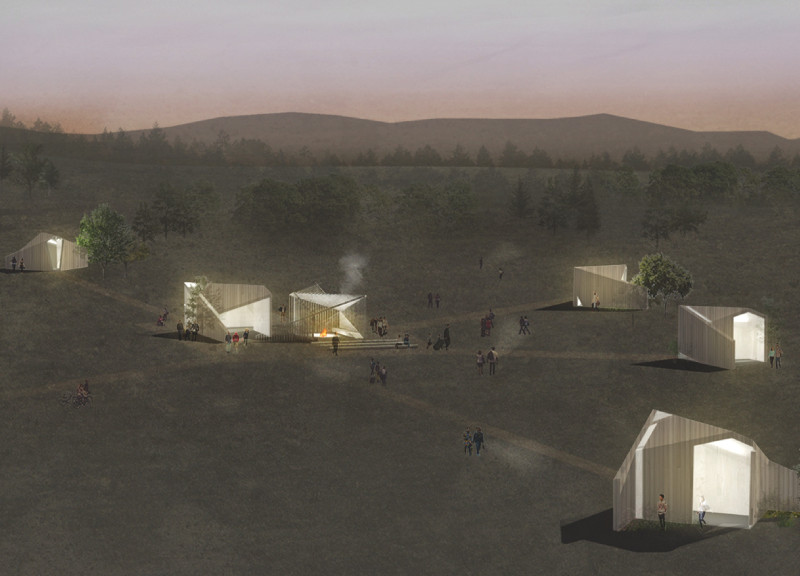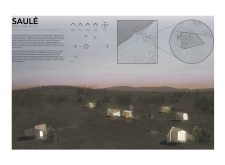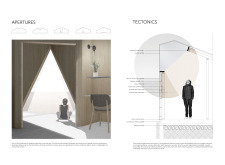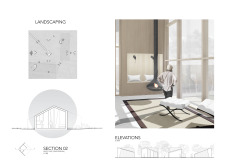5 key facts about this project
Design Concept and Function
The primary function of "Saulė" is to offer serene and contemplative spaces for writers seeking inspiration. The layout consists of several guest huts arranged around a central host cabin, providing varying accommodation options: a hut for four, a hut for two, and a solitary hut. This arrangement promotes interaction among residents while still allowing for personal reflection through spatial separation. The use of warm materials like wood and glass highlights the project’s commitment to environmental sustainability and its connection to the landscape, ensuring that each dwelling harmonizes with its surroundings.
Unique Design Approach
"Saulė" stands apart from typical residential projects through its integration of local architectural forms and cultural symbolism. The structures feature an A-frame design that draws upon Latvian architectural traditions, creating a sense of familiarity while offering modern amenities. Special attention has been given to the geometric configuration of each unit, enhancing both aesthetic value and functional performance. The use of strategically placed apertures maximizes natural light and views, benefiting the residents’ experience while also promoting energy efficiency.
The landscaping surrounding the units has been deliberately designed to maintain local flora, thus enhancing not only the biodiversity of the site but also the interaction between residents and the natural environment. This approach emphasizes a connection to place, allowing visitors to immerse themselves in the serenity of the Latvian landscape.
Engagement with Architectural Elements
For those interested in delving deeper into the project, exploring the architectural plans, sections, and designs provides valuable insights into the meticulous thought process behind "Saulė." The architectural ideas presented cater to both individual and communal experiences, illustrating a balance between privacy and socialization. By examining the project in detail, one can appreciate the thoughtful execution that addresses both functional needs and cultural narrative. The design of "Saulė" serves as an example of how architecture can meaningfully reflect community values while enhancing the residential experience for its occupants.


























